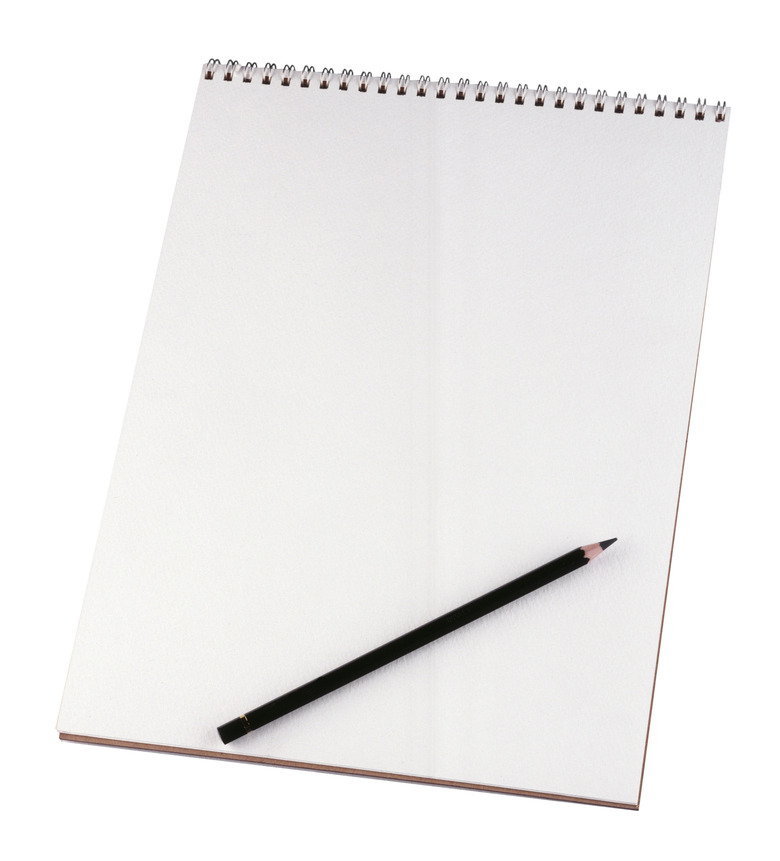Basics Of Mechanical Drawing
The basics of mechanical drafting begin with understanding the concept of orthographic projection. Learning mechanical drawing is similar to learning another language. With a few simple tools and knowledge of views, drawings can be understood and made.
Tools for Mechanical Drawings
Tools for Mechanical Drawings
The first item needed is access to a mechanical drawing book. A good technical drawing book will serve as a reference for a lifetime and can be referred to as long as a person is in the industry. On-line tutorials offer an excellent introduction to technical drawing (See Resources).
The basic drawing tools include an eraser and either a lead holder with leads, mechanical pencils, or wooden pencils of the proper lead hardness. Drawing paper, a tee square, two triangles (one 45 degrees, one 30/60 degrees), a compass and some plastic circle templates are the items a person needs to get started.
Other tools can be acquired as needed. A small drawing board for home use would be useful. A triangular drafting scale with different scales on each face is needed. Two different types of triangular scales are available: engineer and architect. The difference lies in the markings.
Engineer scales show markings as one inch equals 10 feet (or 1:10) on one edge, one inch equals 20 feet (or 1:20) on another edge and so on. Architect scales show markings in fractions, as a quarter inch equals one foot (1/4"=1'0"). These triangular scales are not used to draw lines, but for measuring.
Orthographic Views
Orthographic Views
Understanding orthographic views is the basic knowledge of engineering drawing. If a person imagines an "L" with thickness, the L as printed would be called the front view. If looked at from the top, it is a bar with a line across the width to identify the upper portion of the L. This is called the top or plan view. From the right side, it is a bar with a line near the bottom to identify the lower portion of the L. This is called the right-side view.
Drawing Paper
Drawing Paper
Drawing paper for mechanical drawings is vellum. It is a thin paper so that it can be used to make blueprints. Vellum is tough and stands up to repeated erasures. In the corner is the title block for such information as the title, scale of the drawing, drafter, checker and date.
Drawing to Scale
Drawing to Scale
With the concept of the "L" layout in mind, the idea is to fit the drawing to the paper. If the length of the upper leg of the L is 6 inches, the lower leg is 3 inches, and the thickness is 2 inches and the paper is 8.5 x 11, the drawing won't fit.
If drawn half size, the three views would fit, but wouldn't leave extra room. A quarter size would work. Draw the upper leg 1.5 inches, the lower leg .75 inches and the thickness at .25 inches. Enter the scale in the title block and draw.
Adding Dimensions
Adding Dimensions
Engineering drawing needs to have dimensions. Extension lines extend to identify features, and then lines with arrows at the end perpendicular to the extension lines are marked with the actual length of the feature. On the "L" drawing, the upper leg would be 6, the lower leg 3, and 2 would identify the thickness of the legs and width.
Technical Drawing Basics
Technical Drawing Basics
Although computer assisted drawings (AutoCAD) have become standard for drafting, knowing technical drawing basics helps engineers and architects create complete and accurate sketches and drawings. Draftspeople, machinists, contractors and even fire prevention specialists use mechanical drawings. While technical drawing lessons may seem a bit out-of-date, the skills and knowledge developed separates technical drawing beginners from professional engineers and architects.
Cite This Article
MLA
Moore, Les. "Basics Of Mechanical Drawing" sciencing.com, https://www.sciencing.com/basics-mechanical-drawing-5877384/. 20 September 2019.
APA
Moore, Les. (2019, September 20). Basics Of Mechanical Drawing. sciencing.com. Retrieved from https://www.sciencing.com/basics-mechanical-drawing-5877384/
Chicago
Moore, Les. Basics Of Mechanical Drawing last modified March 24, 2022. https://www.sciencing.com/basics-mechanical-drawing-5877384/
